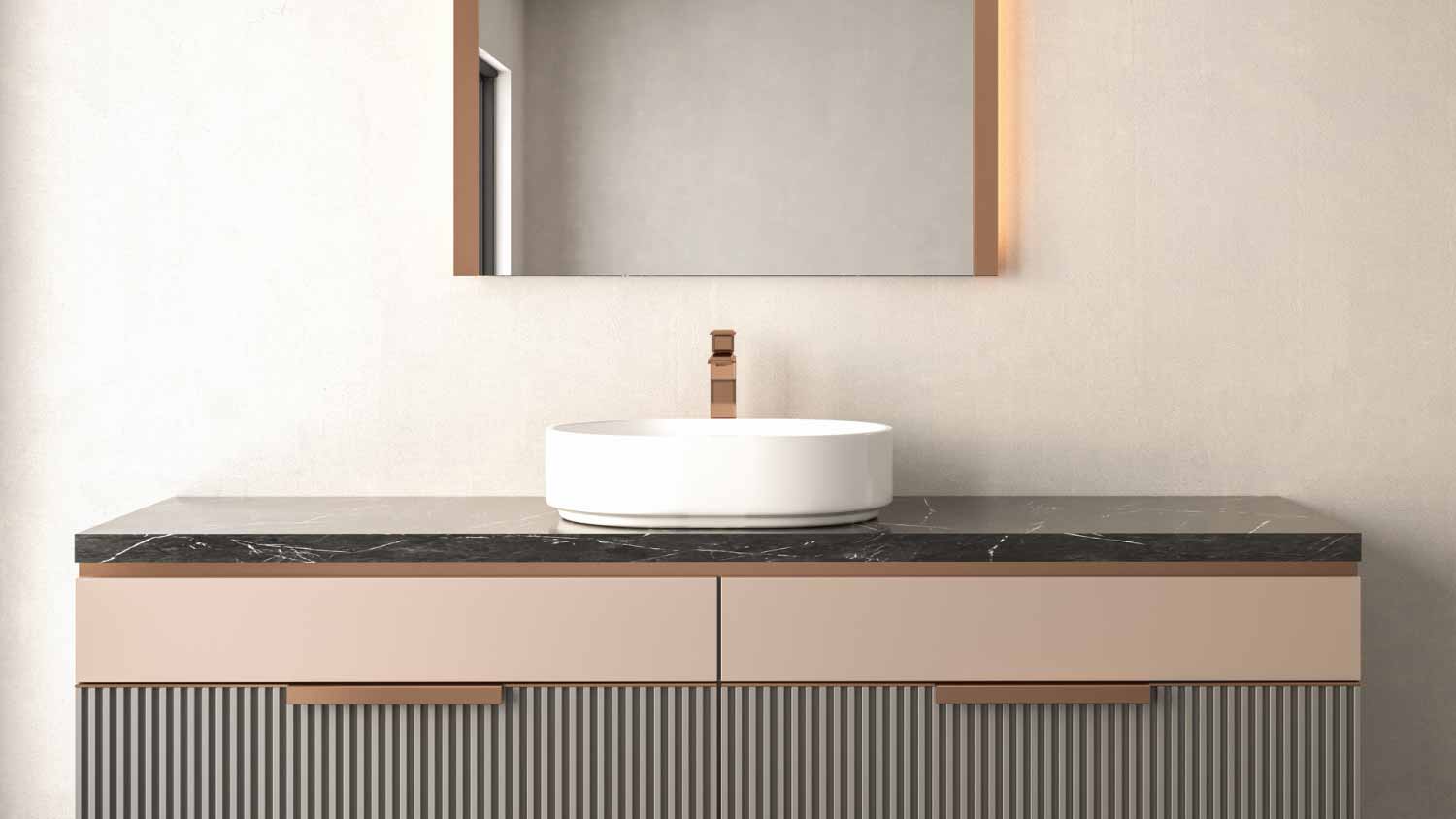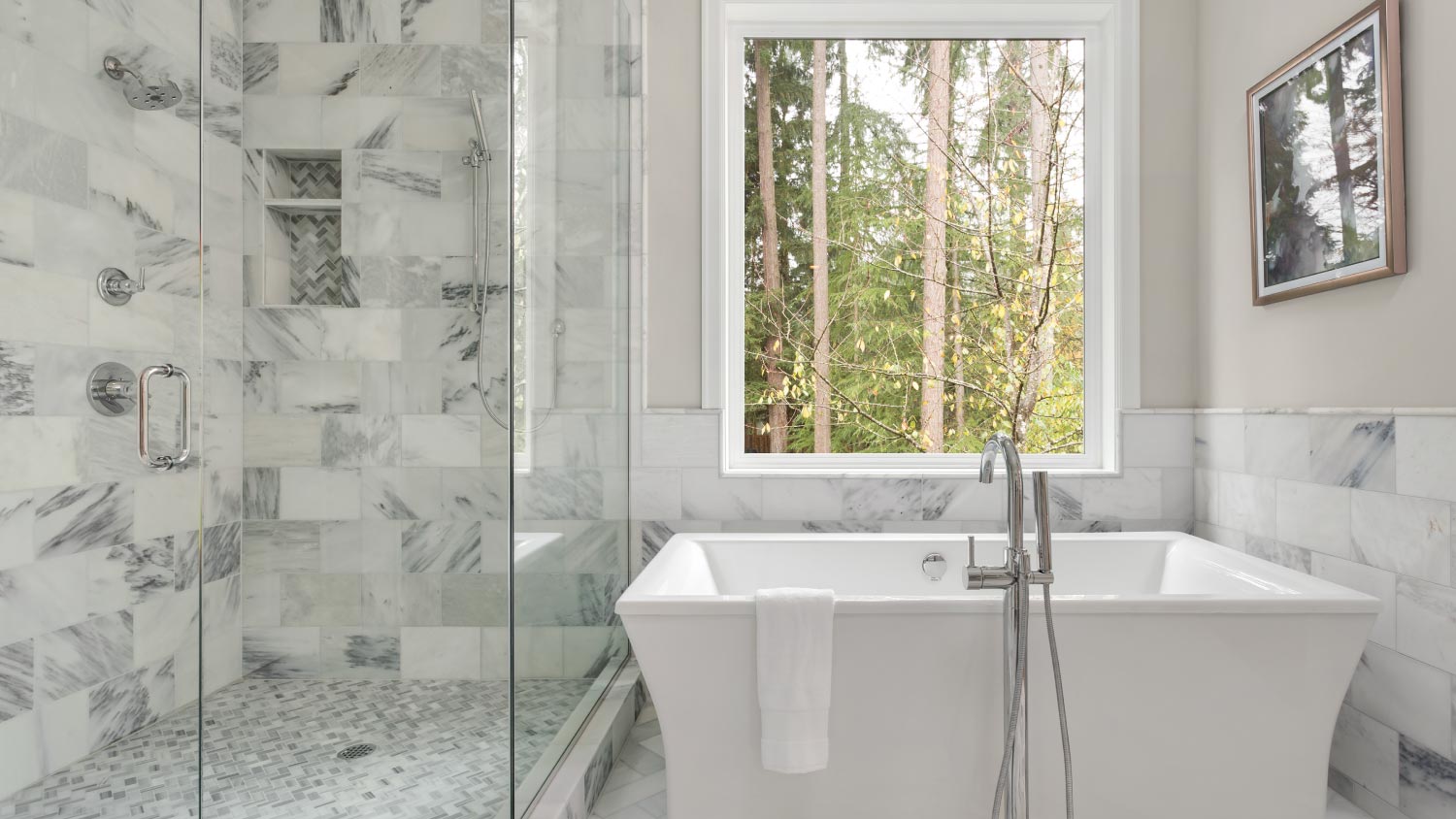
A bump-out addition is right for you if you want to add extra space to your home without adding a new room. Learn about the different bump-out addition costs.
Are floating bathroom vanities the stuff of dreams or nightmares


Floating bathroom vanities are a modern alternative to traditional vanities.
They offer a minimalist aesthetic, more floor space, and easier cleaning.
Installing a floating vanity is more complex than a standard vanity and may not conceal the plumbing.
There are many bathroom vanity styles to choose from, but the best will fit your needs.
Floating bathroom vanities offer a modern departure from traditional vanities, can help make small bathrooms look larger, and create an unexpected twist in bathroom design. But is this vanity style right for your bathroom? Let’s examine the pros and cons of floating bathroom vanities to see if they best fit your needs and space.
A floating bathroom vanity is mounted on the wall rather than installed on the floor. The size and style can vary, with smaller vanities leaving more floor space. Larger vanities can be mounted closer to the floor, offering more storage and counter space.
Floating vanities have multiple pros, which may be why you’re considering installing one in your bathroom. Here are the benefits of this type of vanity.
| Pros | Cons |
|---|---|
| Visually pleasing | Advanced install |
| Easier to clean | Requires support to hold the weight |
| Adds floor space | Less storage space |
| Can customize the height (to a point) | Potentially visible plumbing |
| Height must align with the plumbing |
Floating vanities offer a clean and modern aesthetic that can streamline the look of a bathroom. The “floating” appearance adds an interesting design touch and may make the bathroom appear larger and more open.
We all know that dust bunnies love to hide under furniture and cabinets. A floating vanity doesn’t rest on legs, making it easier to use a broom or vacuum attachment underneath to rid the space of dirt, dust, or other debris, like an errant hairbrush or kid’s toy.
Depending on its size and how high above the ground you install the floating vanity, you may end up with additional floor space for storage. This is ideal in smaller bathrooms where storage space is at a premium.
Installing a floating vanity may be a solution if the vanity you love isn’t the right height for the space. Because they’re installed on the wall rather than the ground, you have a lot more flexibility regarding the actual height of the vanity. This allows you to choose the height best for those in the home.
Even with all of the pros, weigh the cons before going all in on installing a floating vanity in your bathroom.
Floating bathroom vanity installation is more complex than traditional vanity installation. To install a floating vanity, you’ll need the right tools and a partner (or two) to lift it off the ground, level it, and secure it to the wall. You may also need to install additional bracing for adequate support. Hiring a vanity installer may be the way to go—they can get the job done safely and make sure your bathroom looks stunning.
Installing a floating bathroom vanity isn’t as easy as lifting it off the ground and screwing it into the wall. To support its weight, you should add bracing to the studs—which means it’s easier to install during bathroom construction. If the bathroom is already finished, you can install mounting brackets to ensure the vanity is securely attached to the wall.
Because a floating vanity won’t reach the floor, it’s smaller than a traditional vanity, and you may lose some storage space. This can be challenging, especially for large households that depend on vanity storage to house all their toiletries, hairdryers, and cleaning supplies.
Depending on the size of the vanity you choose, it may not be able to conceal all of the plumbing, and you will have some visible pipes. While this may not be an issue for some, you may want to find a way to conceal the plumbing. The height of the vanity and placement of the plumbing may also make it difficult to access the pipes for repairs or maintenance.
Keeping plumbing considerations in mind, there may be restrictions on the vanity height to hide the plumbing or make sure the vanity is installed with the plumbing accessible. The size of the vanity can help you determine the best placement and whether or not it will work within the height restrictions of your space.

If you’re not ready to go all in on a floating bathroom vanity, many other types of bathroom vanities may be a good fit for your bathroom. Other types of vanities include:
Freestanding vanities
Corner vanities
Pedestal sink vanities
Offset vanities
If you’re wondering if a floating vanity is the right addition to your bathroom, consider asking yourself these questions:
Does the modern aesthetic fit with your overall bathroom design?
Do you need a single or double vanity?
Do you want to pay for installation or go the DIY route?
Do you need the floor space?
Will you be able to conceal the plumbing?
Do you need the vanity at a specific height?
Answering these questions will help guide you toward a floating or traditional vanity. You can also discuss your options with a bathroom vanity installation professional near you who can give you expert input for your specific situation.
From average costs to expert advice, get all the answers you need to get your job done.

A bump-out addition is right for you if you want to add extra space to your home without adding a new room. Learn about the different bump-out addition costs.

Pedestal sinks are small bathroom wonders, but how much does a pedestal sink installation cost? Learn the cost factors for adding one to your bathroom.

Home sauna costs aren’t cut and dry. It depends on the model and your space. If you want to install a sauna, this guide will help you plan your budget.

An updated bathtub can give a bathroom a whole new look. Find out how much it costs to replace a bathtub in Atlanta, GA, including prices by type and labor costs.

Here's a look at the cost to build a garage with apartment on your property for a rental or in-law apartment.

Quartz sinks can be an affordable and simple-to-maintain alternative to stone sinks. Learn about quartz sinks pros and cons in this guide.